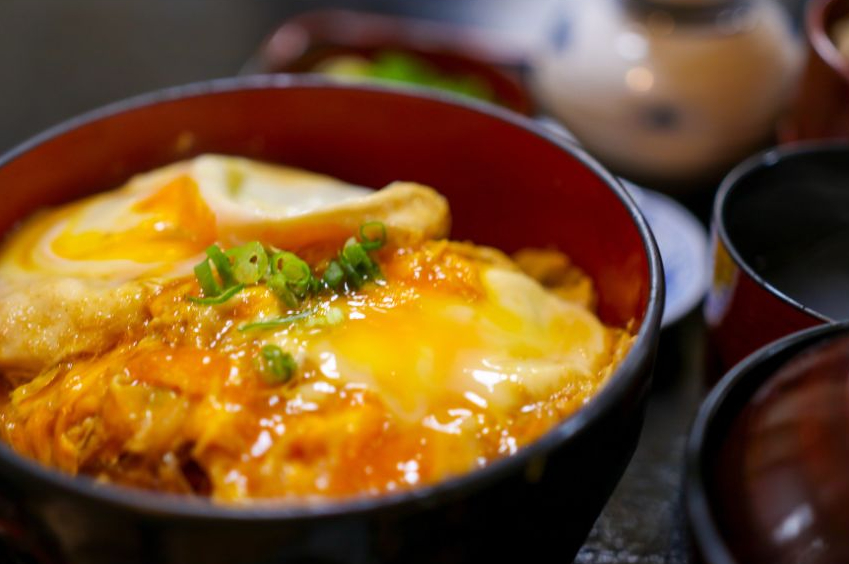Chicken and Eggs for Lean Muscle Gain
Whether or not you read our blog piece this month on muscle wasting with age, if you are looking for muscle building recipes, look no further. This one is rich in protein and other nutrients necessary for building lean muscle. Plus, it’s made in one pan, it’s quick, and requires no cooking oil, but it’s delicious and comforting. Take a break from the bland boiled chicken and tasteless steamed veggies from the standard weight-lifting meal plan.
Why Eggs?
As long as you aren’t allergic, eggs are a near-perfect food. They are high in protein, low in fat, and contain valuable nutrients like choline, leucine, and omega-3 fatty acids.
Choline is an essential phospholipid typically grouped with the B vitamins. It is necessary for the production of acetylcholine, which transmits signals from nerves to muscles, facilitating muscle movement and coordination. Some research suggests that choline supplementation may improve muscle function and athletic performance [1]. Acetylcholine is also essential for memory, and mood regulation. This may be the mechanism explaining why choline intake appears to support cognitive function, memory, and overall brain health, particularly during aging [2].
Leucine, one of the essential branched-chain amino acids (BCAAs), has garnered significant attention for its role in promoting muscle protein synthesis, thereby supporting muscle growth, particularly when consumed in conjunction with resistance training [3]. Studies have shown that supplementation with leucine can enhance the muscle-building response to exercise, leading to greater gains in muscle mass and strength over time [3]. If you are looking for a balanced amino acid supplement containing leucine, try Metabolic Maintenance’s BAM (Balanced Amino Acid) blend.
Omega-3 fatty acids, particularly the long-chain varieties EPA (eicosapentaenoic acid) and DHA (docosahexaenoic acid), have been shown to enhance muscle protein synthesis, the process by which muscles repair and grow in response to exercise and resistance training [4]. Omega-3 fatty acids can help to mitigate inflammation, which can aid in reducing exercise-induced muscle damage and soreness, allowing for more frequent training sessions and greater overall gains in muscle mass and strength [5].
In addition to promoting muscle growth, omega-3 fatty acids may also help prevent muscle loss, particularly in situations where muscle wasting occurs, such as during aging [4].
Why Chicken?
Along with chicken being famous for its absorbable protein content, it is also a fantastic source of the B vitamins niacin and B6.
Niacin, also known as vitamin B3 or nicotinic acid, is a water-soluble vitamin that plays a crucial role in various metabolic processes. Vitamin B3 helps dilate blood vessels, leading to improved blood flow throughout the body, including to muscles. Niacin is necessary for DNA repair and cell regeneration processes, which are essential for muscle recovery and repair after exercise-induced damage [6]. Adequate niacin levels help ensure efficient muscle tissue repair, allowing for more significant gains in muscle mass over time.
Vitamin B6, also known as pyridoxine, plays a role in the metabolism of amino acids, the building blocks of proteins. It helps convert amino acids into usable forms, facilitating the synthesis of new proteins, including those found in muscle tissue.
Vitamin B6 is necessary for the breakdown and utilization of glycogen, the primary storage form of carbohydrates in muscles [7]. During exercise, glycogen serves as a vital energy source for muscle contractions. Proper glycogen metabolism ensures that muscles have an adequate supply of energy during workouts, supporting performance and endurance.
Recipe (serves 2)
Oyakodon is a classic Japanese home-cooking dish. Eggs, chicken, and onions simmer in a comforting broth and sit over steamed rice.
Traditionally, you would cook this dish in a one-serving oyakadon pan, but you can prepare it for two in any medium-size frying pan. We will also suggest cooking the eggs a little more than a traditional recipe, for food safety. For the sake of good health, we suggest brown rice, as it is much higher in nutrients and fiber than its hulled, white counterpart.
Ingredients
- 1 small white or yellow onion
- 2 chicken thighs
- 4 eggs
- ½ cup Japanese dashi broth (can be purchased as powdered mix or packaged concentrate)
- 2 tablespoons soy sauce
- 2 tablespoons mirin wine
- 2 teaspoon sugar (or alternative)
- 2 green onions
- Shichimi togarashi/Japanese seven spice (optional)
Cooking Directions
Halve the onion and slice it into half-moons and diagonally slice the green end of the green onions.
Trim fat from chicken thighs, halve them sideways, and then cut into ¾ in squares.
Crack the eggs into a bowl and break up yolks and whites without beating them. Eggs should look slightly marbled, but still distinctly whites and yolks.
Whisk together the dashi, soy sauce, mirin, and sugar until the sugar dissolves.
Add the onions and broth mixture to the cold frying pan before turning on the heat to medium. Once the mixture comes to a simmer, add the chicken. Once the broth has returned to a simmer, turn the heat down to low. Cook for 5 minutes, flipping the chicken pieces over halfway through.
Drizzle about half of the egg mixture over the chicken and onions, avoiding the hotter edges of the pan. When those eggs have nearly set, add the second half of the eggs. Top with green onions and a sprinkle of shichimi togarashi (if desired) and cook until eggs are set to your preferred level of doneness. Traditionally, oyakodon is served with yolks still runny, but we cannot suggest that preparation for food safety reasons.
Slide or spoon the finished dish onto bowls of steamed rice and drizzle on any remaining sauce from the pan. Enjoy immediately.
References
- https://www.mdpi.com/2072-6643/12/7/2144
- https://www.hindawi.com/journals/bn/2021/2962245/
- https://www.mdpi.com/2072-6643/12/4/1061
- https://www.sciencedirect.com/science/article/pii/S0002916523020683
- https://link.springer.com/article/10.1186/s12970-020-00405-1
- https://www.cell.com/cell-metabolism/pdf/S1550-4131(20)30190-X.pdf
- https://www.mdpi.com/2072-6643/13/9/3229
